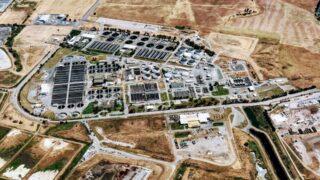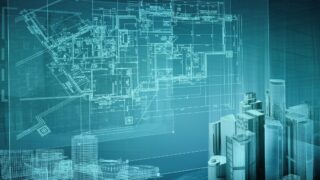Exploring Computational Building Design: Revolutionizing Architecture
Computational building design represents the forefront of innovation in architecture, integrating the power of computers with the creativity of human design. This progressive field merges algorithmic thinking with traditional architectural practices, enabling architects to explore complex geometries and structures that were once deemed impossible.
Historically, the evolution of computational design has been closely tied to advancements in computer technology, transitioning from simple 2D drafting to complex 3D modeling and, more recently, to algorithm-driven design processes. These advancements have not only expanded the horizons of architectural design but have also significantly improved efficiency, sustainability, and customization in building projects, making it a vital component of modern architecture.
In this blog post, we will explore the concept of computational building design, tracing its historical evolution through the present-day architectural landscape. We’ll also look into how computational design is revolutionizing the way architects approach the planning, design, and execution of building projects.
Fundamentals of Computational Building Design
The intersection of technology and architecture has ushered in a new era of building design, where the boundaries of creativity and efficiency are constantly being redefined.
Algorithms and Automation
Algorithms play a foundational role in the realm of computational design, automating a complex and iterative design process that facilitates the creation of intricate and effective architectural structures. This automation is made possible through the development of specific algorithms that instruct the computer on how to perform certain tasks, ranging from generating geometric forms to optimizing building layouts for energy efficiency. A study published in Advanced Engineering Informatics highlighted a project where algorithmic techniques were used to automate the design and construction process of buildings, resulting in a reduction in construction materials and significant time savings in the design phase.
Parametric Modeling
Parametric modeling in design represents a paradigm shift in architectural design, allowing designers to manipulate and explore relationships between design intent and design response. It is characterized by the use of parameters to define and adjust the geometry of a building, enabling architects to quickly iterate and refine their designs. The power of parametric modeling was demonstrated in the construction of the Beijing National Stadium, where architects were able to create the stadium’s iconic “bird’s nest” structure through parametric design tools, optimizing the use of materials while achieving aesthetic and functional requirements.
Generative Design
Generative design takes the capabilities of computational design a step further by using algorithms to generate a wide array of design alternatives based on specific criteria set by the architect. This approach allows for the exploration of numerous design options, optimizing for factors such as sustainability, cost, and material efficiency. Parametric and generative design techniques were used in the construction of the Shanghai Tower, enabling architects to create a unique spiraling form that maximizes natural light and minimizes wind load.
Applications in Architecture
The applications of computational building design extend far beyond the theoretical, influencing tangible aspects of how buildings are conceptualized, designed, and constructed.
Sustainable Design Solutions
Computational design is at the forefront of promoting sustainability in architecture, enabling architects to create buildings that are not only aesthetically pleasing but also environmentally responsible and resource-efficient. By employing algorithms and simulation tools, designers can assess various environmental factors such as sunlight, wind patterns, and thermal performance to create designs that minimize energy consumption and reduce carbon footprints. A notable example is the Edge building in Amsterdam, which has been dubbed the “greenest building in the world”. Using advanced computational techniques, the Edge incorporates energy-generating technologies and highly efficient climate control systems, achieving a 98.4% score on the BREEAM sustainability assessment.
Structural Optimization
Computational design also plays a crucial role in structural optimization, enabling the creation of structures that use materials more efficiently while maintaining or improving strength and stability. This approach often involves generative design processes to explore a multitude of variations, identifying optimal structural forms that require less material and are quicker to construct, without compromising safety standards. For instance, the design of the Morpheus Hotel in Macau was achieved through computational design methods, where algorithms dictated the optimal arrangement of the building’s exoskeleton, significantly reducing material usage while creating a visually striking and structurally sound building.
Adaptive Façades
Adaptive façades represent another innovative application of computational design, where buildings can respond in real time to environmental changes, such as altering sunlight, temperature, and wind, to maintain comfort levels and improve energy efficiency. These dynamic systems adjust automatically to optimize natural light and heating, reducing the need for artificial lighting and climate control. The Al Bahar Towers in Abu Dhabi features a responsive façade system that was developed using computational design tools, consisting of a series of geometric patterns that open and close in response to the sun’s movement. This not only enhances the building’s thermal performance but also reduces solar gain, showcasing the potential of computational design to create visually stunning and high-performing adaptive buildings.
Tools and Technologies
The revolution in architectural design and construction, fueled by computational building design, relies heavily on advanced tools and technologies. These enable architects and engineers to visualize, simulate, and optimize their projects in unprecedented ways.
Building Information Modeling (BIM)
Building Information Modeling (BIM) stands as a pillar in modern architectural practice, providing a digital fabrication of the physical and functional characteristics of spaces. BIM facilitates a collaborative environment among architects, engineers, and contractors, allowing for integrated decision-making throughout the entire lifecycle of a building, from initial planning to demolition.
For instance, advanced technology such as the Transcend Design Generator leverages BIM to its full potential by incorporating all disciplines of facility design into a unified CAD-based system capable of producing highly accurate 3D models alongside comprehensive databases. These databases encapsulate all engineering requirements, details, and properties within a central model, permitting an exceptionally detailed level of design validation and error elimination in the conceptual design phases of projects.
So, if you’re interested in creating an architectural design for water and power utilities that can withstand the most complex urban environments, learn more about the Transcend Design Generator and how it can help you achieve your project goals.
Computational Fluid Dynamics (CFD)
Computational Fluid Dynamics (CFD) allows for the detailed simulation of fluid flow, heat transfer, and related phenomena within and around buildings. This powerful tool aids architects and engineers in optimizing the environmental performance of buildings, enhancing occupant comfort while minimizing energy consumption. CFD can simulate the effect of natural ventilation, heat gains, and losses, as well as predict airflow patterns, to design more efficient HVAC systems.
Virtual Reality (VR) in Design
Virtual Reality (VR) in design has transformed the architectural landscape, offering immersive experiences that bridge the gap between virtual models and physical reality. VR enables architects and clients to step into a virtual representation of a proposed space, facilitating a better understanding of spatial relationships, material finishes, and lighting effects. This direct visual and spatial experience can significantly improve design decision-making and client satisfaction. Furthermore, VR can reduce design errors and the need for costly physical prototypes, leading to more accurate and efficient project outcomes.
Integration with Building Lifecycle

The seamless integration of computational design throughout the entire building lifecycle marks a significant innovation in the industry, revolutionizing how buildings are conceived, constructed, and maintained. This holistic approach ensures efficiency and sustainability from the initial sketches to the ongoing maintenance and operation of the building.
Design Phase
During the design phase, computational design tools like BIM and VR offer architects and engineers the ability to experiment with different architectural forms and structures virtually before any physical work begins. This phase benefits from advanced simulations, including structural, thermal, and lighting analyses, allowing design teams to optimize the building’s performance from the outset. Predictive analytics can forecast future usage patterns and environmental impacts, leading to designs that are both aesthetically pleasing and highly functional. The use of these technologies ensures that potential problems are identified and resolved early, reducing the need for costly modifications during construction or after occupancy.
Construction Phase
In the construction phase, computational design continues to play a crucial role, guiding the translation of virtual models into physical structures. Tools like BIM facilitate smooth communication among all stakeholders, ensuring that everyone has access to up-to-date information and documentation. This coordination can significantly reduce errors and discrepancies on site, streamline the construction process, and save time and resources.
Operation and Maintenance
Once the building is operational, computational design tools transition to support the maintenance and management of the structure. Building performance data, collected through sensors and IoT devices integrated into the BIM model, can be analyzed to inform maintenance schedules, predict system failures, and optimize energy consumption. This ongoing analysis helps in extending the lifespan of the building’s components and systems, ensuring they perform as intended and adapting to changing uses over time. Technologies like VR can also be used for training maintenance staff on complex systems and for visualizing potential upgrades or renovations with minimal disruption to the building’s occupants.
Advantages of Computational Building Design
The evolution of computational design in the building industry not only revolutionizes the lifecycle of a building but also brings forth significant benefits including:
Enhanced Workflow Efficiency
The integration of computational design tools such as generative design and CFD throughout the design, construction, and operation phases significantly enhances project efficiency. These tools streamline the planning process, improve coordination among stakeholders, and facilitate the early detection of potential issues, leading to a more coherent and swift execution of projects. For instance, the interactive nature of generative design allows for real-time collaboration among architects, engineers, and contractors, minimizing misunderstandings and the consequent need for rework.
Cost Reduction
Computational building design substantially reduces overall project costs. Early detection of clashes and design issues through BIM and other simulation tools can prevent expensive corrections during construction and after the building is operational. Furthermore, the precise material quantifications and the optimization of designs for energy efficiency lead to more economical construction and lower operational costs, respectively. The predictive analytics aspect of computational design also aids in the optimal allocation of resources, thus avoiding wastage and unnecessary expenses.
Design Flexibility
Computational design provides architects and engineers with unprecedented design flexibility. Sophisticated modeling tools enable the exploration of a wide range of design scenarios quickly and economically, facilitating innovative solutions and customized designs that meet specific needs and preferences. This flexibility allows for iterative testing and refinement of ideas, ensuring that the final design is both functional and aesthetically appealing. Additionally, the ability to simulate various environmental conditions and scenarios helps in creating buildings that can adapt to future changes, enhancing their longevity and relevance.
Challenges and Limitations
While computational building design heralds a new era of efficiency and innovation in the construction industry, it is not without its challenges and limitations. These barriers can sometimes slow the adoption and full integration of these technologies into standard practices.
Technical Complexity
The implementation of computational design tools comes with a high degree of technical complexity. These systems often require robust hardware and sophisticated software that can handle large datasets and complex algorithms, making them difficult to integrate seamlessly into existing workflows. Additionally, the advanced nature of these tools can complicate the design and construction processes, necessitating a thorough understanding of both the technology and its application to effectively leverage its benefits. This complexity could potentially lead to project delays or increased costs if not managed properly.
Skill Requirements
Adopting computational design technologies necessitates a level of expertise that may be beyond the current capabilities of many professionals within the industry. The effective use of tools like BIM, CFD analysis, and predictive analytics requires specialized knowledge and training. This skill gap presents a significant hurdle for firms looking to incorporate these technologies into their practices. Investment in training and education is essential but can be a barrier in terms of time and finances for individuals and organizations.
Data Security Concerns
With the integration of computational tools, the building design process generates a vast amount of data. While this data is invaluable for optimizing building designs and operations, it also raises substantial data security concerns. The risk of data breaches and cyberattacks could potentially expose sensitive information, leading to significant financial and reputational damage. Ensuring the security of data, therefore, becomes a paramount concern for all stakeholders involved, requiring robust cybersecurity measures that may add another layer of complexity and cost to projects.
Future Trends and Innovations
This innovation not only promises to further enhance efficiency and flexibility in design but also aims to address some of the world’s most pressing environmental challenges.
Artificial Intelligence Integration
Artificial Intelligence (AI) is set to transform the landscape of computational building design by automating repetitive design tasks, enhancing decision-making, and fostering innovation. AI algorithms can analyze vast datasets to predict outcomes, optimize designs for both performance and cost and even generate novel design solutions that a human computational designer might not conceive of. This integration can lead to more efficient use of resources, reduction in waste, and the creation of smarter, more adaptive building systems that respond dynamically to their environment and occupants’ needs.
Augmented Reality Applications
Augmented Reality (AR) offers a groundbreaking way for architects, engineers, and stakeholders to visualize and interact with design projects. By overlaying digital information onto the physical world, AR can facilitate a more intuitive understanding of how designs will exist in reality. This can aid in everything from spatial planning and the selection of materials to identifying potential design conflicts before construction begins. Furthermore, augmented reality can enhance client engagement and satisfaction by enabling them to visualize and ‘walk through’ their projects during the planning phase.
Sustainable Material Exploration
The exploration and incorporation of sustainable materials are critical in reducing the environmental impact of building designs. Most computational design tools are advancing this exploration by simulating the performance of various materials under different conditions, thereby identifying those that offer the best blend of sustainability, durability, and cost-effectiveness. New materials such as self-healing concrete, transparent aluminum, and recycled composites are being evaluated for their potential to decrease carbon footprints, increase energy efficiency, and create healthier, more resilient built environments. This commitment to sustainability is a driving force behind the development of computational building design, reflecting a broader industry shift towards more environmentally responsible practices.
Final Thoughts
The advancement of computational building design is revolutionizing the architecture, engineering, and construction industries, bringing unparalleled efficiency, innovation, and sustainability to the design process. These technologies, from AI to AR, and the exploration of sustainable materials, are not only redefining the parameters of design but are also setting a new standard for the future of construction. Despite the challenges and complexities, the potential to create more adaptive, efficient, and sustainable buildings makes this an exciting time for the industry.
Learn more about how the Transcend Design Generator is at the forefront of these innovations and how it can unlock new possibilities for your water, wastewater, or power projects here.







